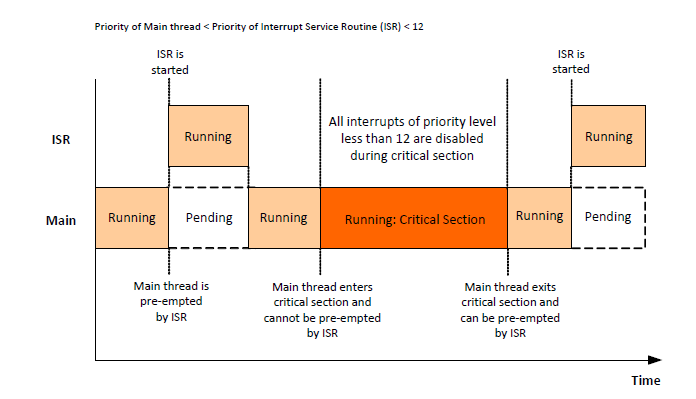Implementing a critical section
Interrupts with a priority level less than 12 cannot preempt the execution of a critical section of application code (though higher-priority interrupts can always preempt a critical section). This is illustrated in Figure 14 below, which shows the interplay between the main application thread and an interrupt service routine (ISR).
Priority of Main thread < Priority of Interrupt Service Routine (ISR) < 12
Critical Section Illustration

Critical section illustration
Time
A critical section of code must be delimited by the following two functions:
zps_eEnterCriticalSection() must be called at the start of the critical section.
zps_eExitCriticalSection() must be called at the end of the critical section.
A mutex can also be optionally associated with a critical section, to protect the section from re-entrancy. If required, the mutex can be specified in a parameter of zps_eEnterCriticalSection(). Mutexes are described in Section 5.9.3.2.
To implement critical sections, the application must maintain a ‘priority level’ value u8Level(see Section 9.3.2.1) which contains the current priority level of the main application thread (when critical sections are not being executed). When a critical section is entered, the priority level of the main thread is increased such that interrupts with a priority of 11 or less cannot preempt the main thread. At the end of the critical section, the priority level of the main thread is returned to the value that was contained in u8Levelbefore the critical section was entered.
Parent topic:Implementing a critical section
Parent topic:Critical sections and Mutual Exclusion (Mutex)